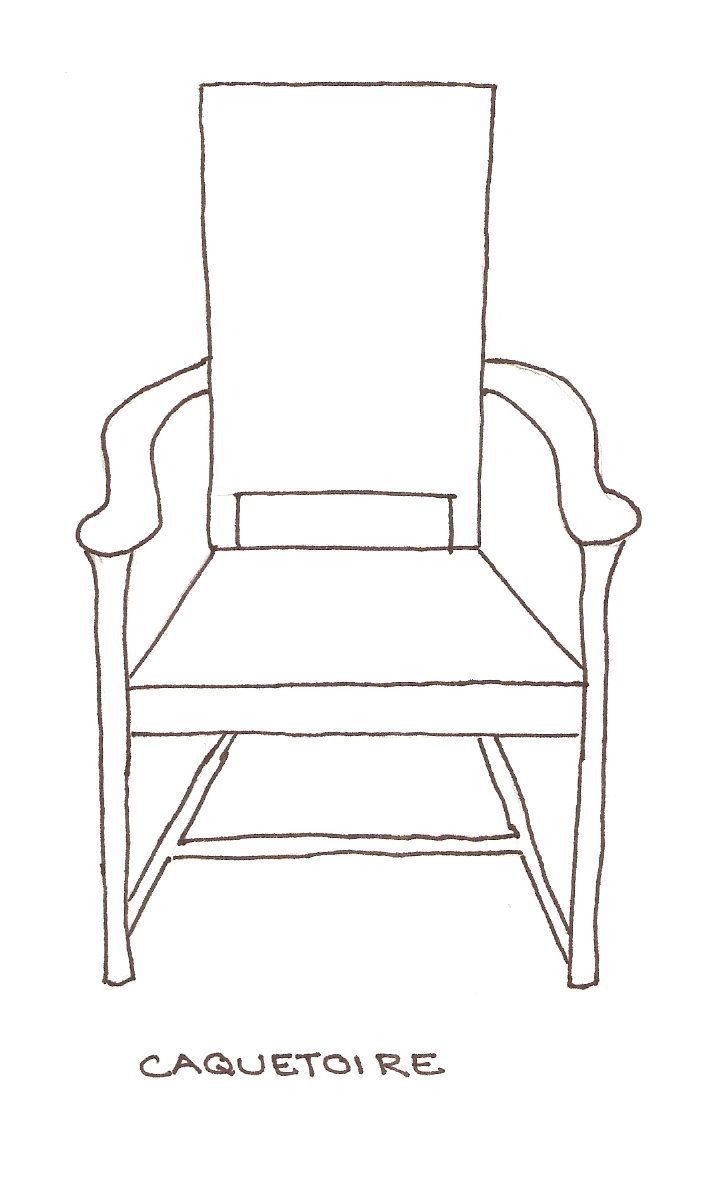 | ||
The caquetoire, or conversation chair, was an armchair style which emerged during the European Renaissance.
It was largely used in France, and is one of the most well-known pieces of furniture from the French Renaissance. This chair is often associated with groups of women sitting and conversing. Due to fashions of the time and the lack of heating systems in homes, women wore several layers of skirts and petticoats to keep warm. This often prevented them from fitting comfortably into armchairs with rectangular seats. A caquetoire seat is splayed so women in their large skirts could easily sit.
These chairs were often made from walnut rather than oak allowing the frames to be more elaborately carved. They were built with mortise and tenon joinery, so no nails were exposed and no glue had to be used. The supports were baluster-turned and terminated in bun feet.
The name caquetoire is derived from “caqueter”, a French term meaning “to chat”. The chair was thus named the caquetoire as a reference to women sitting and talking.
